For the second year, together with the City of Warsaw, we are running a program aimed at facilitating the integration of refugee children and youth in Warsaw schools. This year, however, has posed special challenges. Aleksandra Zielińska, Cultural Assistant, writes more about it. We encourage you to read the article.
Communication barriers and conflicts in today's multicultural school
In recent years, Polish education has been experiencing an increase in tension and conflict. The reasons for this are many. Slow educational reforms, inadequacies in curricula, working conditions and teaching aids, low salaries and, consequently, shortages in teaching staff are fostering dissatisfaction. This, however, is nothing new, one might say.
The early 2000s brought entirely new conflict situations. First, distance education, caused by the coronavirus pandemic, contributed to the reduction or complete loss of communication competence, confinement, withdrawal, alienation among Polish students. This has led to difficulties in reconnecting, conflicts, depression among young people.
Almost simultaneously, school environments across Poland began to expand to include a large group of emigrants from Eastern Europe. First by Belarusians, fleeing the regime of Alexander Lukashenko, then by Ukrainians, fleeing the war started by Russia. This caused further conflicts, the source of which were communication barriers of misinformation, unfamiliarity with the language, cultural differences, lack of acceptance of the political situation. Problems also arose on national grounds on the lines of "Polish students - Ukrainian students," as well as "Ukrainian and Polish students - Belarusian and Russian students."
One of the biggest conflicting problems we have today - in the middle of 2022 - is precisely the problem of effective communication.
In any communication system, barriers and obstacles can be observed that result in a distortion of the process of transmitting and receiving information. Such a barrier can be anything that prevents or distorts communication. A message is a certain code, it can be a drawing, a cipher, a gesture, a word. Communication proceeds correctly when the sender and receiver of the message decode it equally. That is, for example, a teacher, wanting to tell about a square, draws a square on the blackboard. The student sees the drawing and knows that it is a square. In this case, the communication is correct. The recipient has correctly read the message of the sender. The educational goals set by the educator have a chance to be achieved only on the condition that the message reached the addressee and was decoded correctly.
An essential element of communication that determines the achievement of understanding is language. Linguistic correctness, skillful use of a variety of linguistic means, timbre and tone of voice when conveying knowledge results in better understanding of curriculum content by students. Non-verbal means of communication, such as facial expressions and gestures, enrich the language and help more effectively convey one's thoughts and feelings.
But in today's multicultural school environment, it is on this plane of communication that the greatest problems and communication disorders occur. Children attending Polish schools with migrant experience do not know Polish. Yes, by law they are supposed to get two extra hours of Polish language lessons per week - but practice is sometimes different. I have met Belarusian children who have not received such hours for one and a half years of education
In a Polish school.
To make matters worse, there is a shortage of qualified teachers of Polish as a foreign language in the institutions, so often, even if such lessons are held, they look like remedial classes - which, for a child who has never learned Polish in his life, is not as effective as extensive lessons in Polish as a foreign language, which systematically, without chaos, introduce the student to the
Into a new language.
As a result, the role of nonverbal communication is increasing in today's school, through which the teacher is able to reach non-Polish-speaking students more effectively. However, in this nonverbal communication message, every element is important and should be read well by the teacher. Only if he is able to read a student's nonverbal messages will he be able to spot a problem earlier and immediately respond appropriately.
Basic communication barriers also include inattentive listening to the interlocutor. It occurs when the recipient, instead of focusing on the information being conveyed to him, disrupts the communication process. Currently, this is particularly true of Ukrainian students, who psychologically close themselves off to the new environment. Often this attitude is caused by the children's anticipation of returning to their country, regularly fueled by their guardians. It's hardly surprising to them, but this causes the child to subconsciously close himself off to the Polish school - because why should he get involved here, if he's about to leave it anyway....
The disastrous effects of such attitudes clearly manifested themselves at the end of the 2021/2022 school year, when the coveted return to Ukraine did not materialize, and the lack of commitment contributed to problems with positive grades at the end of the year.
Responsibility for another group of communication barriers in today's schools lies with adults - school staff and parents at home. These barriers include a group of phrases that can be described as demeaning statements. They include accusations, reproaches, condemnations, triggers, threats and orders.
Unfortunately, children of political refugees from Belarus have faced verbal aggression from other students in the last six months. Some of them have faced accusations related to their country's involvement in the war in Ukraine on the side of Russia, there have been calls of these children as killers and fascists, and even beatings based on nationality. This despite the fact that families of Belarusian children have had to flee to Poland precisely because of their disagreement with the policies of the Lukashenko regime.
The aforementioned conflicts, as long as an insightful teacher recognizes them, can be easily resolved by explaining to the children the realities of the current reality, showing how much there is in common between them, methodically working on group order, conducting psychological and integration workshops. A qualified multicultural assistant can be of help here, whose task is, among other things, to notice conflict situations in the classroom and support the teacher in conducting workshops and integration activities with the class.
It is much more difficult to deal with prejudice, unfriendliness and resentment appearing on the line "migrant child - teacher". Unfortunately, such situations also occur in Polish school. In the spring of 2022, due to the war in Ukraine, Belarusian children experienced a cardinal change in attitude and became victims of verbal attacks from teachers as well: "You won't pass, because you don't negotiate with terrorists", "I won't talk to fascists", "you don't deserve a better grade, there was no need to start a war" (authentic statements, heard by children in schools in Warsaw). Such behavior should not happen at all anymore.
The teacher often doesn't even notice his own bias - because by noticing his attitude, he would have to sign off on his own lack of competence. Student-teacher conflict can only be resolved with the involvement of third parties. In such situations, the child, being in a less reliable position than the teacher, is often forced to change schools.
In a disturbed communication process, bullied students are told that they are unimportant, disrespected, unaccepted, and that no one cares about their needs and problems. This attitude causes children to "shut down," and they often feel anger and hostility, which they express with their behavior - resistance, disobedience and aggression. What seems most disturbing is that the consequences of school conflicts are causing an increasing number of neurosis, depression, personality disorders and even suicide attempts among children and adolescents. Most often, this is due to children's poor mental and physical stability, their inability to cope with the demands of today's school and the modern world.
Most teachers and students realize that today's school is full of disputes and conflict situations. More and more schools are trying to find ways to resolve conflicts. The school should teach children how to live in given realities, in an environment of other people, introduce workshops to improve integration, train desirable communication skills, resolve current conflicts positively, and preferably actually prevent them.
Some schools are taking up the issue boldly, understanding that improving relations at school is desirable and possible - and that it depends mainly on demonstrating a willingness to get along. In the second half of the 2021/2022 school year, the number of cultural assistants and Ukrainian teacher aides in Warsaw schools increased many times over, and teachers began to get involved, comparing curricula, creating special worksheets and even learning the basics of Ukrainian to make communication with new students more effective. Unfortunately, here, too, there has been - unintentional - segregation, in which the children of Belarusian refugees are again disadvantaged: they don't have privileges like the new Ukrainian students, and they find the worksheets or test papers in Ukrainian just as difficult to read as in Polish.
Despite this, I will venture to say that Polish schools in the last six months have taken a giant step forward in better understanding the needs of students with migrant experience and in creating a welcoming multicultural environment. And school principals, who have already discovered how much support they get from cultural assistants, will not give up on their participation in school life.
Aleksandra Zielinska, MA, educator, teacher, acultural systent in the project "Program for the rapprochement of cultures"
Public task financed from the funds of the City of Warsaw.
How You Can Help
Support the work of our Foundation - only with your help can we succeed!
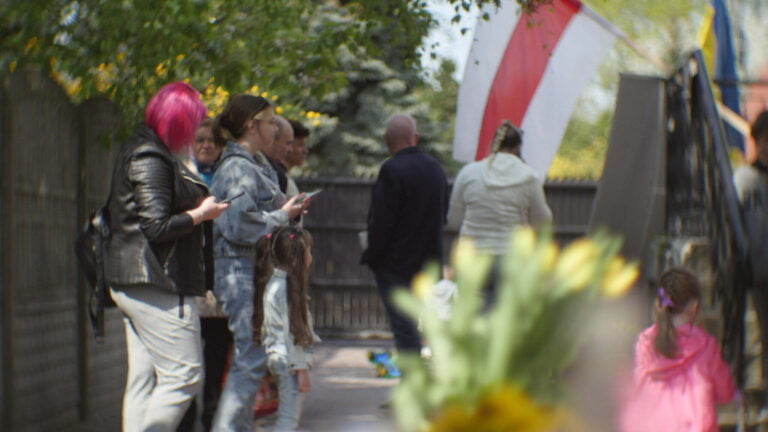
The founders of the foundation have been actively helping refugees for more than 15 years. Humanosh Foundation has been operating since 2020, with the help of the family, volunteers and thanks to the support of donors we help refugees and spread the story of the Wołosiański family.
Our mission is to build a reality in which every person feels safe and dignified, regardless of his or her background, race, religion or skin color.
Only with your help can we succeed!


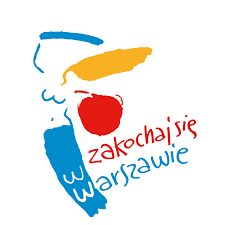
](https://humanosh.org/wp-content/uploads/2023/01/SGH-photoutils.com2_.png)

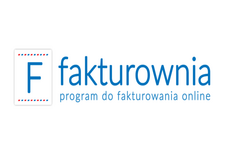
](https://humanosh.org/wp-content/uploads/2023/01/CU-marketing-consulting-photoutils.com1_.png)
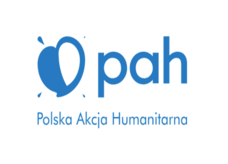

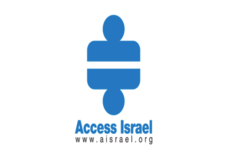
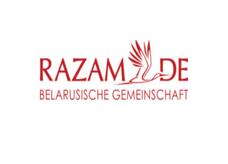
![ELEOS [photoutils.com].](https://humanosh.org/wp-content/uploads/2023/01/ELEOS-photoutils.com_.png)
![FOR_Logo_Horizontal [photoutils.com].](https://humanosh.org/wp-content/uploads/2023/01/FOR_Logo_Horizontal-photoutils.com_.png)
![Citizenship Fund [photoutils.com].](https://humanosh.org/wp-content/uploads/2023/01/Fundusz-obywatelski-photoutils.com_.jpg)
![GCF-logo-pdf-for-banners [photoutils.com].](https://humanosh.org/wp-content/uploads/2023/01/GCF-logo-pdf-for-banners-photoutils.com_.jpg)
![Ilios [photoutils.com].](https://humanosh.org/wp-content/uploads/2023/01/Ilios-photoutils.com_.png)
![Logo_National_Forum [photoutils.com].](https://humanosh.org/wp-content/uploads/2023/01/Logo_Krajowe_Forum-photoutils.com_.png)
![Neuca-1 [photoutils.com].](https://humanosh.org/wp-content/uploads/2023/01/Neuca-1-photoutils.com_.png)
](https://humanosh.org/wp-content/uploads/2023/01/ars_logo1-photoutils.com1_.jpg)
![Orlen [photoutils.com].](https://humanosh.org/wp-content/uploads/2023/01/Orlen-photoutils.com_.png)
![WUM-1 [photoutils.com].](https://humanosh.org/wp-content/uploads/2023/01/WUM-1-photoutils.com_.png)

